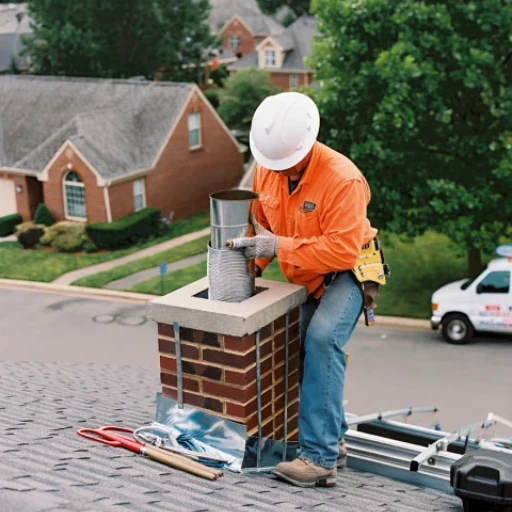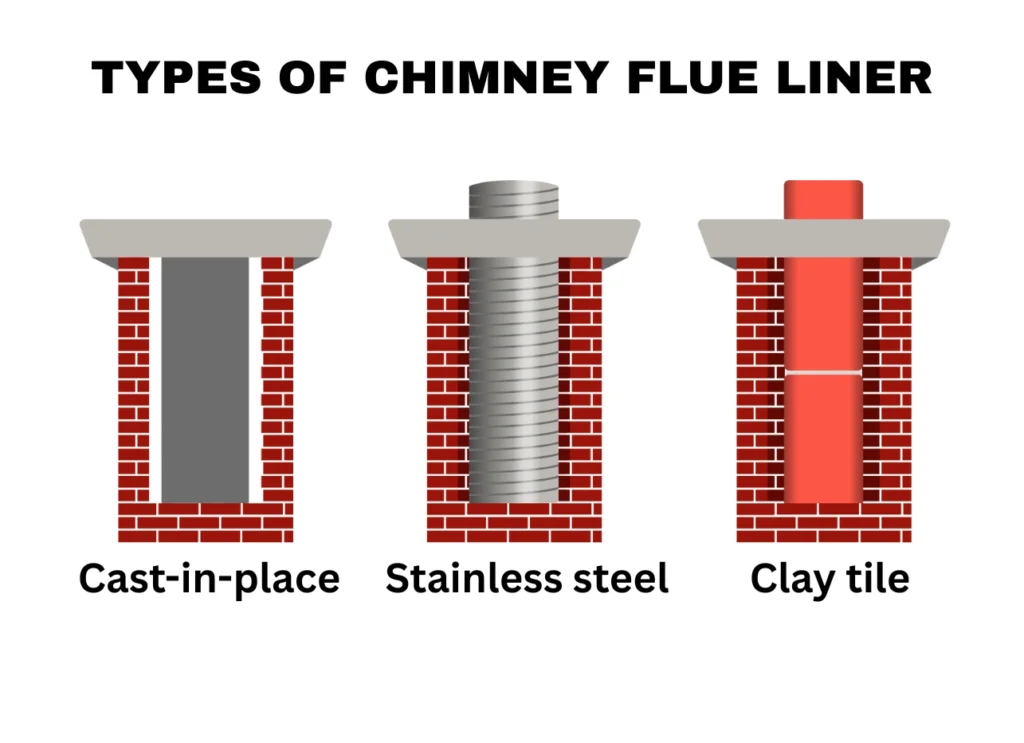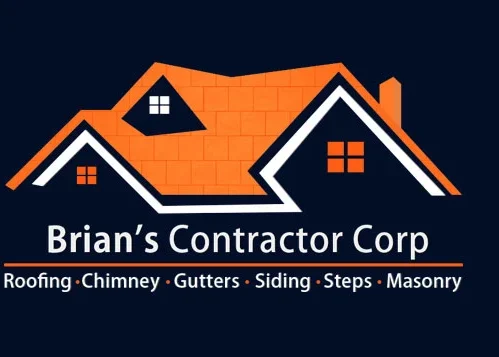
Did you know that a damaged chimney flue can pose a serious fire hazard? What is a chimney flue, and why does it matter? For New York homeowners, understanding this critical component of your fireplace system isn’t just about maintenance—it’s about protecting your family and improving your home’s energy efficiency.
As experienced chimney contractors serving New York for over a decade, we’ve seen firsthand how proper chimney flue function makes the difference between a cozy, efficient fireplace and a dangerous fire hazard. In this guide, you’ll discover exactly what a chimney flue is, why it matters for your home’s safety, and how it affects your heating bills during those brutal New York winters.
Understanding Chimney Flues – Definition, Function & Types
Every time you light your fireplace, a complex ventilation process begins that relies entirely on your chimney flue’s proper function. But what exactly is this crucial component?
What Exactly Is a Chimney Flue and How It Works
A chimney flue is the internal passage within your chimney that directs smoke, gases, and particles from your fireplace safely out of your home. Think of your flue as your chimney’s respiratory system – it creates a controlled pathway for harmful byproducts to exit while maintaining proper airflow for efficient burning.
Unlike the outer chimney structure visible from outside your home, the flue is the interior channel specifically designed to:
- Create proper draft that pulls smoke upward
- Contain heat and prevent it from transferring to surrounding materials
- Direct carbon monoxide and other toxic gases safely outside
- Prevent downdrafts that would push smoke back into your living space
Without a properly functioning flue, the entire safety mechanism of your fireplace system fails.
Types of Chimney Flues for New York Homes

New York’s climate demands specific considerations when selecting chimney flue materials. The three main types each offer different benefits:
Clay tile flues represent the traditional option found in many older New York homes. They’re economical and can last up to 50 years when properly maintained, but they’re susceptible to cracking during New York’s freeze-thaw cycles, particularly in homes across Long Island and upstate regions.
Stainless steel flues provide superior corrosion resistance and durability against our harsh winters. While more expensive initially, they typically last 15-20 years with minimal maintenance and offer excellent heat resistance for wood-burning appliances. For New York’s climate extremes, stainless steel often provides the best long-term value.
Cast-in-place flues create a seamless concrete liner that reinforces the entire chimney structure. These are ideal for older New York brownstones or historic homes with deteriorating masonry, offering structural benefits alongside their ventilation function.
How Your Chimney Flue Impacts Safety & Heating Efficiency
Your chimney flue serves two critical functions that affect your home every day, even when you don’t realize it.
Preventing Fires & Toxic Gases – The Safety Protection
A properly functioning chimney flue creates a barrier between intense heat and your home’s structure. When this barrier fails, the consequences can be devastating.
Chimney fires burn at extremely high temperatures and can quickly spread beyond the chimney, putting your home’s structure at serious risk.
Beyond fire risk, your flue prevents carbon monoxide – a colorless, odorless gas – from seeping into your living spaces. With proper draft, these gases exit safely; with a blocked or damaged flue, they can reach dangerous or even lethal levels inside your home.
Boosting Home Heating Performance – The Efficiency Factor
Your chimney flue directly impacts how efficiently your fireplace heats your home. A properly sized and maintained flue creates optimal draft conditions that:
- Allow fuel to burn completely, maximizing heat output
- Prevent excessive heat loss up the chimney
- Maintain consistent airflow for steady burning
- Reduce the amount of wood or gas needed to heat your space
During New York winters, when temperatures regularly drop below freezing, this efficiency difference can significantly impact your heating bills.
Common Flue Problems & Essential Maintenance
New York’s unique climate creates specific challenges for chimney flues that homeowners must address.
NY-Specific Concerns – Freeze-Thaw Cycles & Winter Damage
New York’s dramatic temperature fluctuations take a toll on chimney systems. When moisture enters small cracks in your flue, the freeze-thaw cycle forces these openings wider, eventually compromising the entire system.
Common problems we see across New York homes include:
- Creosote buildup – especially in homes using wood stoves during long winters
- Moisture damage from snow melt and heavy rains
- Tile cracks from thermal shock when fires are lit in extremely cold conditions
- Chimney crown damage allowing water to penetrate the flue system
These issues compound over time, with minor problems becoming major safety hazards if left unaddressed. In severe cases, extensive damage might require a complete chimney rebuild to restore safety and functionality.
Warning Signs Your Chimney Flue Needs Professional Attention
Your chimney may be sending clear signals that it needs inspection. Watch for these warning signs:
- Smoke backing up into your home when the fireplace is in use
- White or yellow staining on exterior chimney bricks
- Strong odors coming from the fireplace when not in use
- Chunks of flue material visible in the firebox
- Gurgling sounds during rainstorms
The presence of any of these symptoms warrants immediate professional inspection to prevent safety hazards.
For maximum protection, New York homeowners should schedule professional chimney inspections annually, ideally before the heating season begins in October. This timing allows for any necessary chimney repair before your system faces heavy winter use.
Professional Chimney Services – What New York Homeowners Should Know
Selecting the right chimney professional makes all the difference in maintaining your home’s safety and efficiency.
Finding Qualified Chimney Contractors in New York
Not all chimney services offer the same expertise. When selecting a New York chimney professional, look for:
- Certification from the Chimney Safety Institute of America (CSIA)
- Local experience with New York’s specific building codes and climate challenges
- Proper insurance and liability coverage
- Transparent pricing with detailed written estimates
- References from other New York homeowners
Before hiring, ask potential contractors about their experience with your specific flue type and what inspection methods they use to assess internal damage that isn’t visible from the firebox.
Key Maintenance Services That Protect Your Home
Professional chimney maintenance typically includes several critical services:
- Level 1, 2, or 3 inspections depending on your home’s needs and usage patterns
- Professional cleaning to remove creosote buildup and debris
- Flue liner repair or replacement when damage is detected
- Chimney cap and crown repairs to prevent water infiltration
- Waterproofing services to protect masonry in our harsh climate
For older homes in Brooklyn, Queens, and Manhattan, we often recommend chimney restoration services that address both functional and aesthetic concerns while preserving historic character. A professional chimney sweep should be scheduled annually to prevent dangerous buildup and maintain efficiency.
Take Action Today for a Safer, More Efficient Home
Your chimney flue isn’t just another home component – it’s a critical safety system that protects your family while helping manage your heating costs. With proper understanding and maintenance, you can enjoy your fireplace with complete peace of mind. Explore our “Understanding All About Chimney” guide – knowledge is your first line of defense
Don’t wait for obvious problems to develop. Schedule a professional chimney inspection today to ensure your system is ready for whatever weather New York throws your way. Our expert chimney company brings years of specialized experience with all types of chimney systems across the five boroughs and beyond.
Remember, when it comes to chimney flues, proactive maintenance isn’t just the smart choice – it’s the safe one. Contact us for a comprehensive inspection and experience the difference professional chimney care makes for your home.


